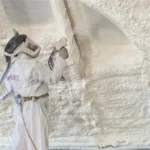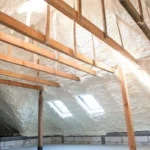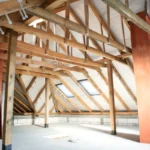Thermal bridges (or thermal bridges) are places in the insulation layer where there is increased heat loss due to reduced thermal insulation properties due to, for example, joints. Thermal bridges arise, for example, as a result of the use of improper technology, incorrect installation or poor adhesion of one material to another (e.g., between the rafter and traditional insulation material, or as a result of flopping on the structural cords or slipping). The easiest way to observe the effects of thermal bridging is to unseal the window slightly in winter. Then you can feel with how much force the cold air enters the room. Thermal bridges can also be seen in the case of frozen rafters, which often give black vertical stripes on ceilings covered with plasterboard.
PUR foam insulation avoids thermal bridges. Spray foam allows it to be applied tightly even with complex roof structures. Permanently bonding with the substrate, it does not change its position over time, ensuring the tightness of the insulation throughout the life of the house.




